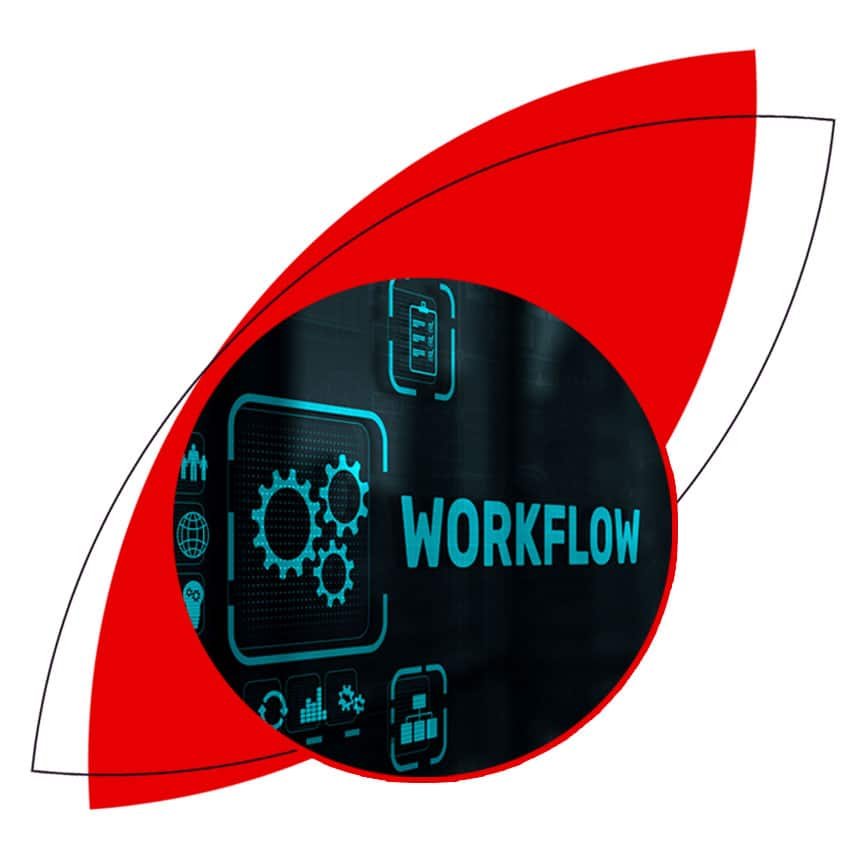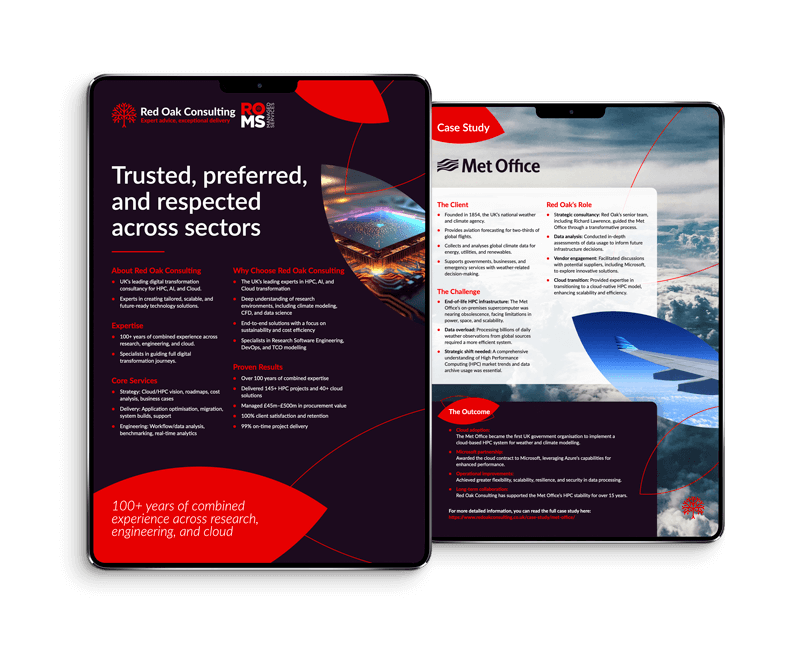The Accessible World of HPC
Supercomputers sure do grab headlines and solve some of the world’s largest problems, but being on the TOP500 is not all that High-Performance Computing (HPC) is about.
The truth is, HPC isn’t reserved for national laboratories or tech giants. It’s a practical efficiency solution that’s transforming how organisations of all sizes approach computational challenges.
At its core, HPC is about maximising resource utilisation and minimising time to solution.
Whether you’re an engineering firm running simulations, a pharmaceutical company modelling molecular interactions, or a financial institution analysing market data, shifting from individual workstations to a properly managed computing environment can deliver dramatic improvements in productivity and cost-effectiveness.
The Status Quo
 Imagine you are part of a team of 5-10 engineers running Computer-Aided Engineering (CAE) or Computational Fluid Dynamics (CFD) simulations. Each of you preps your models, submits your simulation, and then post-processes the results—all on your personal workstation.
Imagine you are part of a team of 5-10 engineers running Computer-Aided Engineering (CAE) or Computational Fluid Dynamics (CFD) simulations. Each of you preps your models, submits your simulation, and then post-processes the results—all on your personal workstation.
Depending on the size of your simulation, you may wait until the end of the day and run your simulation overnight, or you may run smaller simulations continuously throughout the day.
Either way, your workstation is not being fully utilised (That new generation CPU and GPU really accelerates emails…) for a significant portion of time.
The HPC Alternative
Envision a solution where you prepare your simulation, submit it to a remote centralised system, get a notification when complete, and can then post-process the results.
Overall, it feels very similar to the current workflow; however, the key advantage lies in how that remote but centralised system is managed.
 Using a resource manager (the job scheduler) such as SLURM, PBS, IBM LSF, or one of the many others available allows you to queue up simulations as soon as you’re ready.
Using a resource manager (the job scheduler) such as SLURM, PBS, IBM LSF, or one of the many others available allows you to queue up simulations as soon as you’re ready.
The resource manager then determines how best to utilise the available resources (the compute nodes) based on the queued jobs.
With a constant flow of jobs, your compute nodes will continuously run tasks. If you’re preparing for a week away, why not prep a large set of simulations, submit them with a low priority, and return to the results later?
This is a far more efficient use of compute resources than before. This is the power of HPC—the ability to optimise your resource usage and, crucially, get the best value and time to solution from your tools.
Efficiency Beyond Raw Power
Even when comparing like-for-like hardware from workstation to HPC, an efficiency gain is achieved due to the better management and higher availability of resources to run your work.
Another way to look at this is that you may be able to purchase larger, more powerful, but fewer compute resources to achieve the same tasks.
A doubling in performance isn’t needed to double your workload output. If your simulation takes 8 hours to complete, meaning you could only iterate on this once per workday, reducing this to 6 hours would allow you to feasibly fit two engineering iterations into the workday.
Beyond Engineering Simulations
HPC isn’t limited to engineering applications. Consider these examples:
- Data Analytics: Process large datasets in parallel rather than sequentially, reducing analysis time from days to hours
- Machine Learning: Train complex models across multiple nodes simultaneously, enabling more iterations and better model performance
- Genomic Sequencing: Accelerate genomic analysis pipelines by distributing workloads across available resources
- Financial Modelling: Run thousands of Monte Carlo simulations concurrently to improve risk assessment accuracy
Each of these fields faces similar challenges: computational tasks that are too intensive for a single workstation but don’t necessarily require a supercomputer. The HPC approach of centralised resource management provides the ideal middle ground.
Getting Started with Right-Sized HPC
For many organisations, the barrier to entry for HPC is much lower than commonly perceived. At the small end of HPC, options can include:
- Converting existing workstations into a managed cluster: This approach allows you to leverage your current hardware investments while gaining the benefits of centralised resource management. It’s particularly effective for organisations just beginning their HPC journey.
- Hybrid approaches combining on-premises resources with cloud bursting: Maintain a core on-premises cluster for routine workloads while accessing cloud resources during peak demand periods. This provides flexibility without overprovisioning your local infrastructure.
- Fully cloud-based HPC solutions: Ideal for organisations with varying computational needs or those looking to minimise capital expenditure. Modern cloud platforms offer specialised HPC instances optimised for different workloads.
When determining which approach is right for your organisation, consider factors like your typical workload patterns, existing infrastructure, in-house expertise, and budget constraints.
The key is matching the solution to your specific needs rather than assuming HPC requires massive infrastructure investments.
Implementation Considerations
Moving to an HPC environment does come with challenges that should be addressed early in the planning process:
- Software licensing: Some commercial software packages have different licensing models for cluster deployments
- User training: Ensuring your team understands how to effectively utilise the new resources
- Data management: Implementing appropriate storage solutions and data transfer protocols
- Security: Establishing proper access controls and network security for your computational resources
Addressing these considerations upfront will help ensure a smooth transition and maximise your return on investment.
Measuring Success
 A properly implemented HPC solution should deliver measurable benefits. Consider tracking metrics such as:
A properly implemented HPC solution should deliver measurable benefits. Consider tracking metrics such as:
- Reduction in time to solution for typical workloads
- Increase in the number of simulations/analyses completed per month
- Improvement in resource utilisation rates
- Return on investment based on productivity gains
High-Performance Computing is a powerful tool and should be seen as an investment, not a cost. Ensuring that HPC in any form drives improvements is essential to an organisation adopting HPC.
Conclusion
High-Performance Computing isn’t just about having the biggest, fastest supercomputer. It’s about efficiently managing computational resources to maximise productivity and minimise waste.
By shifting from isolated workstations to a centralised, managed computing environment, organisations of all sizes can realise significant benefits in throughput, cost-effectiveness, and time to solution.
The journey to HPC adoption can be straightforward with the right guidance. The setup and configuration of an HPC cluster involves many moving parts, from hardware selection to software configuration.
With the proper expertise, your organisation can navigate these challenges and unlock the full potential of your computational resources.
At Red Oak Consulting, we specialise in HPC solutions tailored to your organisation’s specific needs. Contact us today to learn how we can help you implement an efficient, right-sized HPC environment.

James Page
Lead Consultant
Red Oak Consulting


